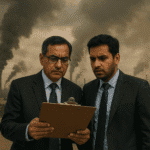Canada is battling a dramatic start to its wildfire season, with more than 220 blazes already spreading across the country over half of them out of control. The total area burned so far, 3.3 million hectares (about 12,700 square miles), is nearly the size of Belgium.
This alarming rise comes just two years after a historically devastating summer and signals another challenging season ahead. Provinces like Saskatchewan and Manitoba were forced to declare emergencies in late May due to rapidly spreading fires. Now, more than a dozen new blazes are ignited daily, often by human activity or lightning strikes.
Mega-fires are tearing through forests in British Columbia, Alberta, and Ontario — putting communities at risk and straining resources. The Canadian army stands ready to aid in evacuations, while international help from Australia and the USA is on standby.
Scientists say climate change is a key driver of these conditions. Rising temperatures, reduced snowfall, and persistent drought create a perfect environment for wildfires to flourish. Without the protective blanket of snow, soil and vegetation dry faster, making forests more susceptible to sparks.
This marks the third consecutive year of severe wildfires in Canada — a trend threatening forests’ ability to regenerate and putting wildlife and human communities in danger. “This is quite worrisome for the country, as we’re experiencing a third consecutive year of intense fires with social and ecological impacts,” said Yan Boulanger, a researcher for Canada’s Ministry of Natural Resources.
Some forests may not grow back, transforming into grasslands and adding to the permanent damage. With large blazes already underway well before the peak of the season, experts say the situation will likely last for weeks or months.














